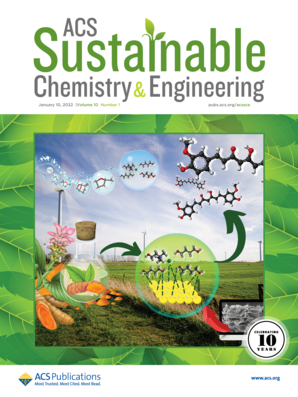A Flux Model-Driven Transverse-Oriented Growth Strategy for the Synthesis of Large-Area Two-Dimensional Molybdenum-Based Materials
IF 7.1
1区 化学
Q1 CHEMISTRY, MULTIDISCIPLINARY
引用次数: 0
Abstract
Mechanical exfoliation of thin sheets remains a prevalent technique for acquiring high-quality two-dimensional (2D) materials, as the chemical vapor deposition (CVD) technique for 2D transition metal dichalcogenides (TMDs) compounds lacks unambiguous theoretical guidance, complicating the precise control of material growth and the synthesis of the desired area and mass. In this paper, we establish the theoretical foundation of the vapor–liquid–solid (VLS) in CVD method growth of TMDs, i.e., the flux model, supported by theoretical analysis and experimental data. Utilizing this theoretical insight, this study proposes a nonvolatile molten salt flux-dominated VLS growth strategy. The introduction of potassium trimolybdate (K2Mo3O10) as a stable molten salt medium enabled the cross-system controlled synthesis of molybdenum-based compounds (MoS2, MoSe2, MoO2, Mo3Te4) by overcoming the reliance of the traditional VLS approach on volatile precursors. The low volatility of this molten salt flux and the synergistic diffusion effect of alkali metals markedly reduced nucleation density and facilitated the targeted lateral growth of atoms, resulting in the successful preparation of millimeter-sized single crystals (maximum size of 918 μm) and centimeter-sized continuous films. The MoS2 films from this demonstrate exceptional electrical performance (mobility 21.74 cm2 V–1 s–1, switching ratio ∼105) in back-gated field-effect transistors with enhanced process compatibility. This study introduces a novel approach for the controllable synthesis of 2D semiconductors using molten salt flux engineering, with its cross-material applicability and centimeter-scale production capabilities establishing a basis for the sustainable manufacturing of wafer-scale electronic devices.

基于通量模型驱动的横向定向生长策略合成大面积二维钼基材料
由于化学气相沉积(CVD)技术用于制备二维过渡金属二硫化物(TMDs)化合物缺乏明确的理论指导,使得材料生长的精确控制以及所需面积和质量的合成变得复杂,薄层的机械剥离仍然是获得高质量二维(2D)材料的普遍技术。本文在理论分析和实验数据的支持下,建立了气-液-固(VLS)法生长tmd的理论基础,即通量模型。利用这一理论见解,本研究提出了一种以非挥发性熔盐通量为主导的VLS增长策略。三钼酸钾(K2Mo3O10)作为稳定熔盐介质的引入,克服了传统VLS方法对挥发性前驱体的依赖,实现了钼基化合物(MoS2, MoSe2, MoO2, Mo3Te4)的交叉体系控制合成。熔盐通量的低挥发性和碱金属的协同扩散效应显著降低了成核密度,促进了原子的定向横向生长,从而成功制备了毫米尺寸的单晶(最大尺寸为918 μm)和厘米尺寸的连续薄膜。该MoS2薄膜在背门场效应晶体管中表现出优异的电性能(迁移率21.74 cm2 V-1 s-1,开关比~ 105),具有增强的工艺兼容性。本研究介绍了一种利用熔盐通量工程可控合成二维半导体的新方法,其跨材料适用性和厘米级生产能力为晶圆级电子器件的可持续制造奠定了基础。
本文章由计算机程序翻译,如有差异,请以英文原文为准。
求助全文
约1分钟内获得全文
求助全文
来源期刊

ACS Sustainable Chemistry & Engineering
CHEMISTRY, MULTIDISCIPLINARY-ENGINEERING, CHEMICAL
CiteScore
13.80
自引率
4.80%
发文量
1470
审稿时长
1.7 months
期刊介绍:
ACS Sustainable Chemistry & Engineering is a prestigious weekly peer-reviewed scientific journal published by the American Chemical Society. Dedicated to advancing the principles of green chemistry and green engineering, it covers a wide array of research topics including green chemistry, green engineering, biomass, alternative energy, and life cycle assessment.
The journal welcomes submissions in various formats, including Letters, Articles, Features, and Perspectives (Reviews), that address the challenges of sustainability in the chemical enterprise and contribute to the advancement of sustainable practices. Join us in shaping the future of sustainable chemistry and engineering.
 求助内容:
求助内容: 应助结果提醒方式:
应助结果提醒方式:


